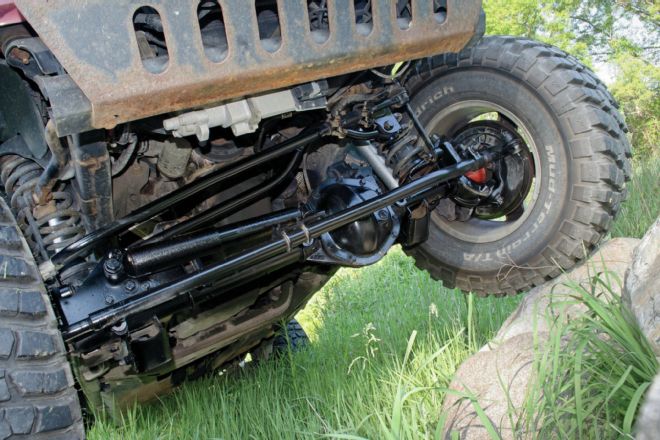
There are only three types of JK Dana 44 front axles: bent ones, ones that will be bent, and those under Jeeps that will never go off road. No one likes throwing away money, and that’s exactly what you fear when considering whether to upgrade your stock axle or replace it with a new aftermarket housing.
We talked to Mel Wade at Off Road Evolution to supplement our own good and bad experiences with these front axles and help you make the right decision for your JK. Mel sells complete Dynatrac ProRock 44 axles as well as axle sleeves and gusset kits for stock axle housings. There are a couple of factors that drive him to suggest one solution over the other to best match his customers’ needs.
What breaks? There are three main things that go wrong over time with the stock front axle. One of the most talked about is overall bending. The stock Dana 44 axle tubes are 2.50-inch OD with a wall thickness of 0.25 inches. The entire axle bends with the outer ends going up to form a smile. Not that the owner will be smiling. The next weak link is the end forgings. These also tend to bend, causing alignment and tire wear issues. Also related to the end forgings is that the ball joints also fatigue, especially with 35-inch or larger tires. We’ve heard of the cast center cracking and the axle tubes coming out, but that extreme breakage is pretty rare.
The two primary deciding factors in the upgrade or replacement dilemma are tire size and abuse. Tire size is pretty straight forward. If you think you’ll use tires 37 inches or larger at any time in the future, do not pass go, and proceed directly to purchasing a complete aftermarket axle. Even in a Jeep that doesn’t do extreme off-roading, the additional weight and stress of massive tires will fatigue the stock axle. Yeah, yeah, we’ve heard of people running Dana 30s with 40-inch tires and not having any trouble. They are the exception, and it’s like juggling swords—sooner or later you’re going to grab the wrong end.
The cross-over point when it comes to tire size is 35s. That’s the most popular size for JKs, and you can go either way at this point. That’s when how you will use the Jeep and what type of driver you are comes into play. If you’ll only do occasional wheeling in the Jeep and you don’t have the need to tackle the toughest trails on the planet, upgrading the front axle will suit you well. If your garage walls are covered with trophies of past drivetrain breakage caused by trails that would make KOH competitors cringe, or have a driving style that regularly includes the phrase, “watch this,” then you’re going to be far better off in the long run upgrading to an aftermarket axle engineered and built to take serious abuse.
The difference in strength between upgrading a factory axle and choosing an aftermarket axle designed from the ground up for extreme off-roading is significant. The Dynatrac ProRock 44 starts with a cast center section that was engineered to withstand higher loads with additional ribbing and a thicker casting in key locations. The 3-inch-diameter, 0.3125-inch-thick axle tubes are 213 percent stronger than factory, compared to an improvement of 30 percent with internal axle sleeving. The new end forgings are massive compared to stock, and the suspension brackets are at least twice as thick as original.
Cost is also a factor, but it shouldn’t be what you base your decision on. First, the difference in price between upgrading the stock axle and replacing the housing with a Dynatrac ProRock 44 isn’t as big as you might think. Off Road Evolution says that it is usually changing the gear ratio in a JK axle at the same time as installing axle sleeves, C-gussets, and heavy-duty ball joints. The upgrade parts run about $600, while the Dynatrac ProRock 44 housing complete with nodular-iron diff cover and new suspension bushings is around $2,000 through Off Road Evolution. The labor for installation is about the same, especially if you were changing gear ratios in the stock axle anyway. In the grand scheme of building a $25,000 or more JK, the cost difference between these two options is pretty small. However, the biggest reason we say it shouldn’t be a factor is that taking the cheap route and then bending or breaking the axle a year or two later costs way more than doing the right upgrade the first time for how you use your Jeep.
You need to realize that the decision on whether to upgrade or replace is the start down a path. Strengthening a stock axle is perfect for mild off-roading and moderate tire size, but limits what you can do in the future. It’s a short path, but perfect for many JK owners. Swapping in an aftermarket axle assembly addresses the strength issues for today and lets you grow what you do with your Jeep in the future.
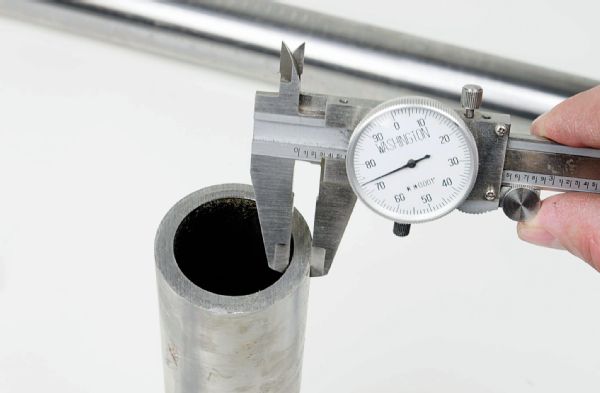
To help fend off bending axle tubes, Off Road Evolution offers its 44-Magnum axle sleeves. The sleeves install inside the factory tubes, increasing the overall strength by 30 percent. They also include greasable seals.
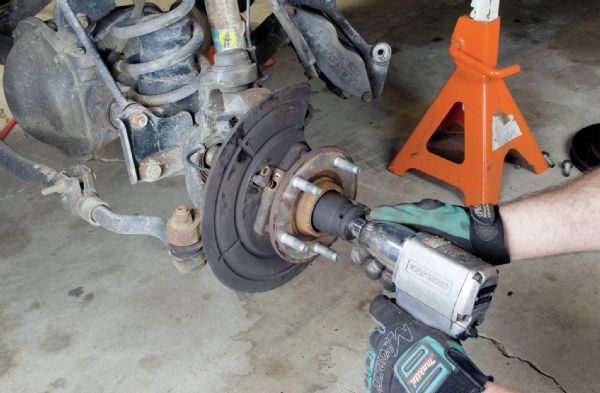
The amount of work required to install the axle sleeves is nothing to sneeze at. The unit bearings, spindles and axleshafts need to be removed. The good news is that you’ll replace the ball joints with all of these other components already removed. The next step is to drill several holes through the stock axle tubes. These will be used to rosette weld the sleeves in place.
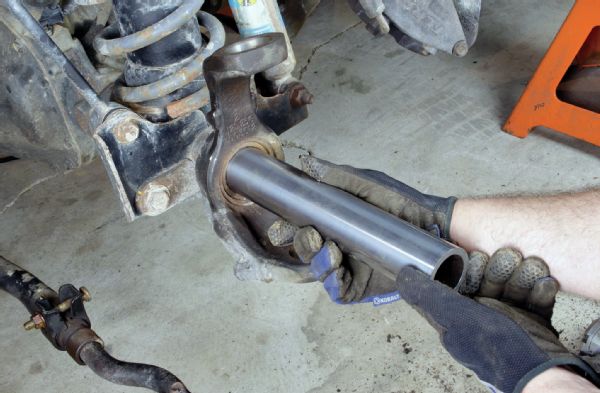
With everything removed, the sleeves slide into the axle tubes. Well, they don’t just slide in; you’ll need to pound them into place with a plastic dead-blow hammer to avoid damaging the outer surface of the sleeve. This job is much harder on an axle housing that is several years old or has been driven in a salty winter environment.
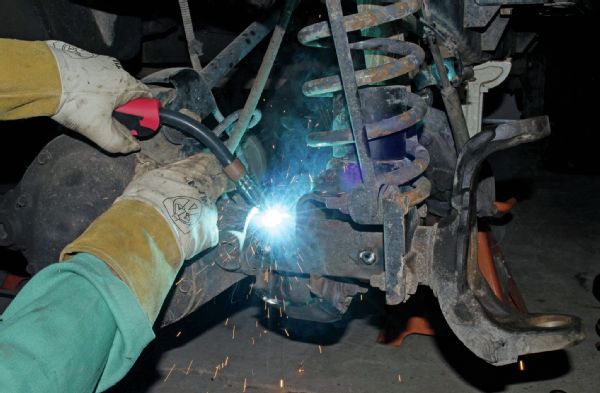
The final step of installing the axle sleeves is to weld the stock tube to the new internal sleeve in several places. This helps the inner and outer tubes work together for greater strength.
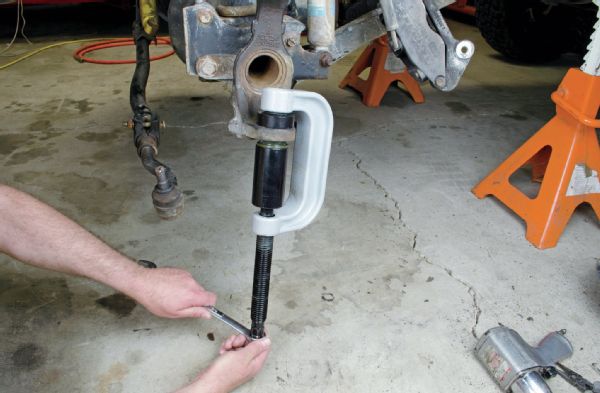
The stock ball joints on JK axle wear quickly with larger tires. Off Road Evolution offers Synergy and Dynatrac heavy-duty ball joints. These fit in the stock axle end forgings, are much stronger than stock, and the Dynatrac versions are rebuildable if wear does occur.
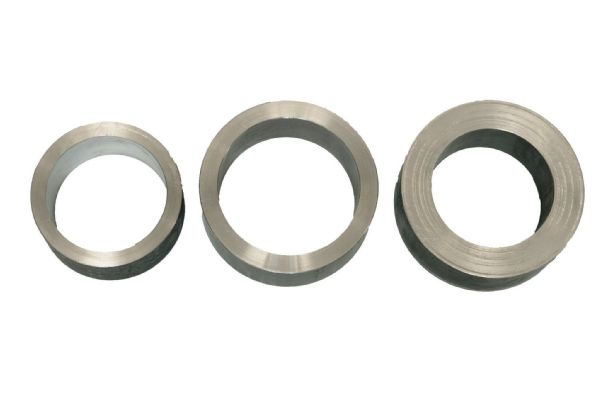
Choosing a Dynatrac ProRock 44 takes strength and durability up quite a few notches. First, the axle tubes in the standard ProRock 44 are 3 inches in diameter with 0.3125-inch wall thickness (center). The Unlimited version of this axle (right) uses 3-inch tubes with up to 0.500-inch thickness for a 282 percent strength increase over the stock tubes (left).
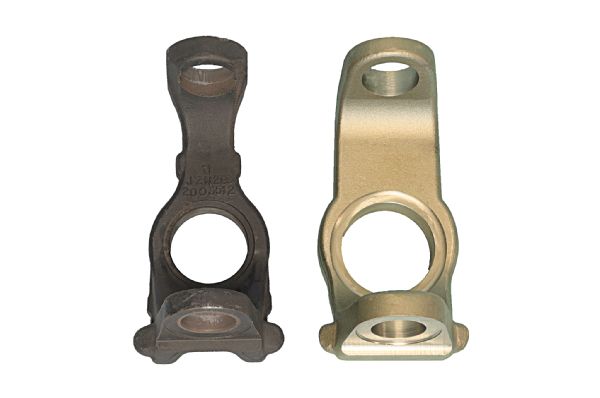
In addition to strength and durability, the Dynatrac ProRock 44 has a patented design that gives it more ground clearance than any Dana 44 -- in fact, more ground clearance than a Dana 30. It accepts the factory locker and axleshafts, or it can be upgraded with just about any locker and axleshafts up to 35-spline RCVs. You can do those upgrades when you first put the housing in your Jeep, or do them later.

To address the end forging issue, Dynatrac engineered its own forging (right) that is significantly larger and stronger. They keep the ball joints in the stock location and don’t affect caster or camber. They are also machined to accept the largest axleshafts available for 44-series axles.